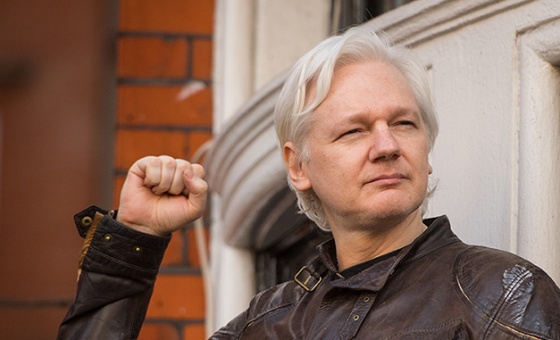This is the last article you can read this month
You can read more article this month
You can read more articles this month
Sorry your limit is up for this month
Reset on:
Please help support the Morning Star by subscribing here
Unbuild Walls: Why Immigrant Justice Needs Abolition
Silky Shah
Haymarket Books, £14.99
SILKY SHAH, the author of a new book on how many immigrants to the US are treated by the US government, has worked with the group Detention Watch Network for over 20 years.
Shah’s text is divided into three sections. The first provides a history of the last three decades, give or take a couple years, of US immigration policy.
It is here where Shah details the intersection between mass incarceration of US residents as the policy for controlling surplus populations, the crackdown on immigration, the growth of the prison-industrial complex and neoliberal capitalism.
Her narrative describes a system caught in its own contradictory need for cheap labour and a nativist tendency in its politics that blames migrants for the disintegration of a nation that never truly existed; a nation that has always depended on the super-exploitation of labour, usually of those with skin not considered white.
Like many recent texts regarding the US policy of mass incarceration point out, the prisons are part of the process used by the rulers to keep those populations in check. The place that immigrants fit into this structure is one where their detention controls the ebbs and flows of the labour market.
In her writing, Shah details facts and history. She includes anecdotes that emphasise her point. In her discussion of how Immigration and Customs Enforcement agents keep tabs on migrants released from a detention centre, she describes a young man with an ankle bracelet. The young man lived in New York City. He fell in love and got married. To celebrate, he and his wife decided to go to Long Island. However, once he left the boundaries established by the electronic device, the bracelet began beeping and repeating a recording wanting him to return back within the “boundaries.”
Like thousands of other US residents, the fact of incarceration goes far beyond any prison walls. In the case of many migrants, their only so-called crime is that they weren’t born in the United States.
The second section looks at how people are organising to change the immigration policy in the US. Given her long-time involvement in this movement, Shah’s insights provide an understanding based on actually working on the issues. Besides being provided a history of this movement, the reader is also provided with details about the debates and the allegiances of the various actors involved.
Like its sister movement regarding mass incarceration, there is an ongoing discussion about reform versus abolition. As an abolitionist, Shah’s position is clear. One cannot reform a prison or a jail. After all, that building remains a place where people are incarcerated. Similarly, an ankle monitor or other such device is still an instrument of control.
As she discusses the debates and the growing sentiment towards aboliiton in the movement, Shah reminds the reader of the role Wall Street and corporate America play in maintaining and expanding the systems of incarceration. To put it mildly, that role is cynical and unapologetically heartless. Underlying it is the assumption that prisons are necessary more than the communities most of those incarcerated come from. That is, the poor, the black and the immigrant.
It is the reorientation of this assumption that underlies Shah’s book. In its final pages she sums up the role incarceration plays in the aforementioned communities and in the communities where many prisons and detention centres are built — mostly rural, economically depressed and politically conservative. It is often the case that once a facility is built in one of these areas, not only are more built but the community becomes even more conservative. Quite often, this dynamic occurs because these facilities often are the main employer.
Consequently, the mindset of the incarceration industry becomes the mindset of the community where the facilities exist. The battle to end incarceration as we know it in the US is a long one that is far from over. Changing the minds of a nation that generally agrees prisons, jails and excessive policing of certain demographics are necessary is a difficult task.
Unbuild Walls describes just some of the work and the obstacles involved. And what such work has already achieved.
Ron Jacobs is the author of Daydream Sunset: Sixties Counterculture in the Seventies published by CounterPunch Books. His new book is Nowhere Land: Journeys Through a Broken Nation (Fomite, 2024). He lives in Vermont and can be reached at: [email protected].











